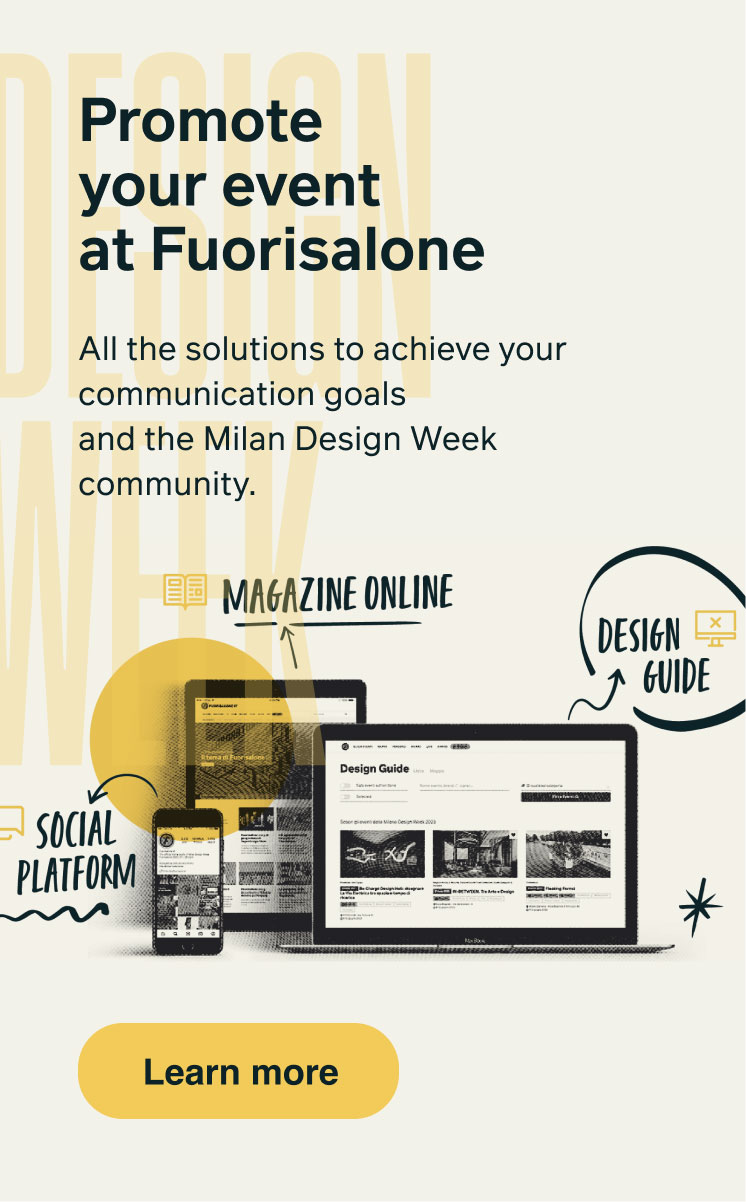Our selection of exhibitions and events not to be missed this month.
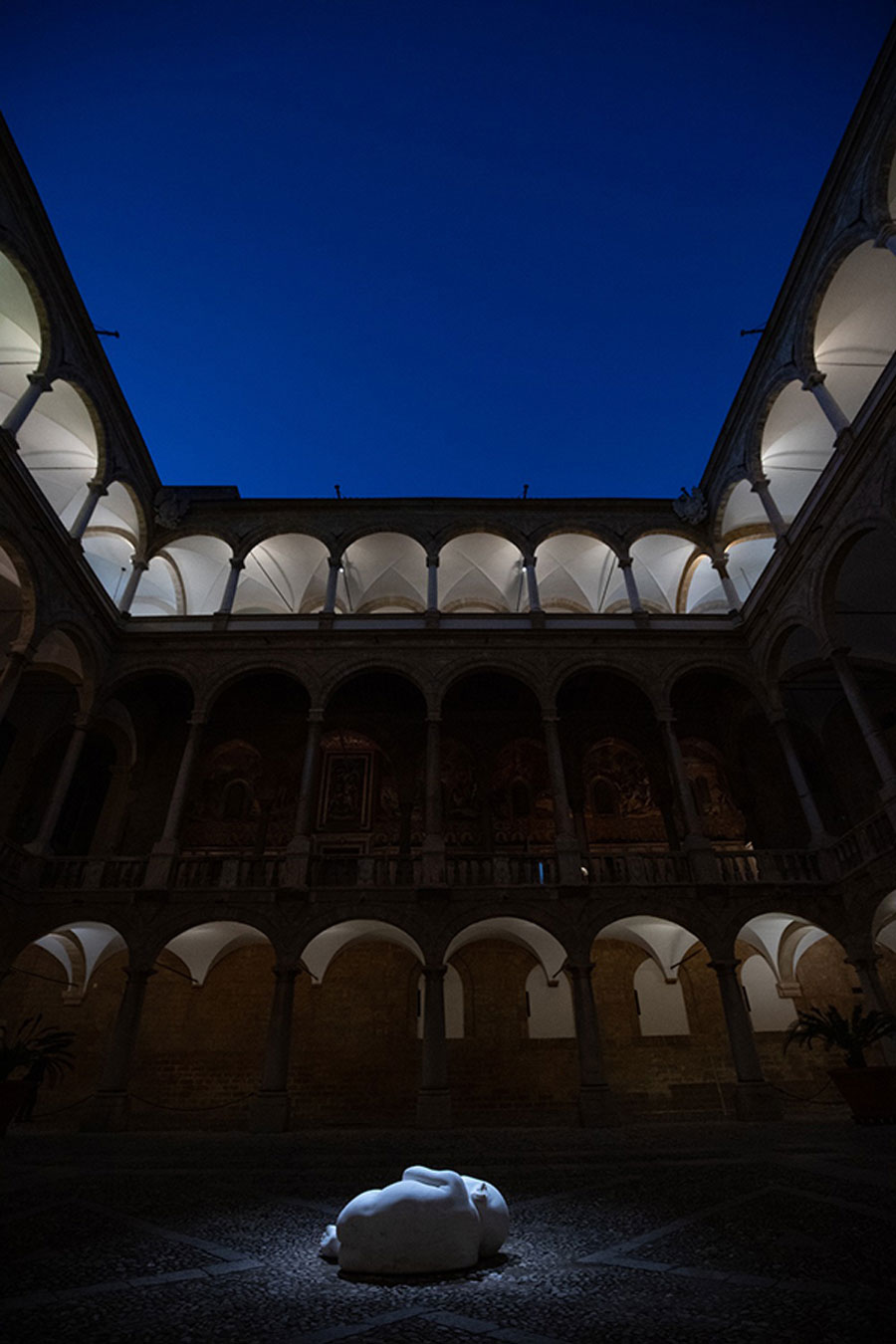
Palermo: “Jago - Look Down”
A white marble baby, curled up in a foetal position, is positioned from today in the centre of the Maqueda Courtyard of the Royal Palace of Palermo, facing one of the most important spiritual monument in the world, the Palatine Chapel, a symbol of coexistence between different cultures and religions. The artwork in question is the famous artwork ‘Look Down’ which is a clear invitation to look down. It was created by Jago and requested to be exhibited in Palermo by the Fondazione Federico II. The ‘foetus’ represents the gaze of art turned to the most fragile, it is the antipodes to indifference. The Italian sculptor, considered one of the greatest artists on the national and international scene, was present this morning at the pre-event press release, which was also attended by the President of the Fondazione Federico II, Gaetano Galvagno and the General Director, Patrizia Monterosso. The work will remain on display until the 3rd of June. Jago manages to impart extraordinary humanity to his works. The Royal Palace, a World Heritage Site, is certainly a suitable venue for the installation. An almost natural relationship is created between the artwork and its context, a dialogue not only conceptual but also visual between the work and the ancient architectural beauty of the place. The work provides a contemporary mirror through which visitors can process the challenges of today. The presence of the work at the Royal Palace becomes an opportunity to explore the social issues expressed by the artist.
Where: Palazzo Reale
When: Until 3 June 2024
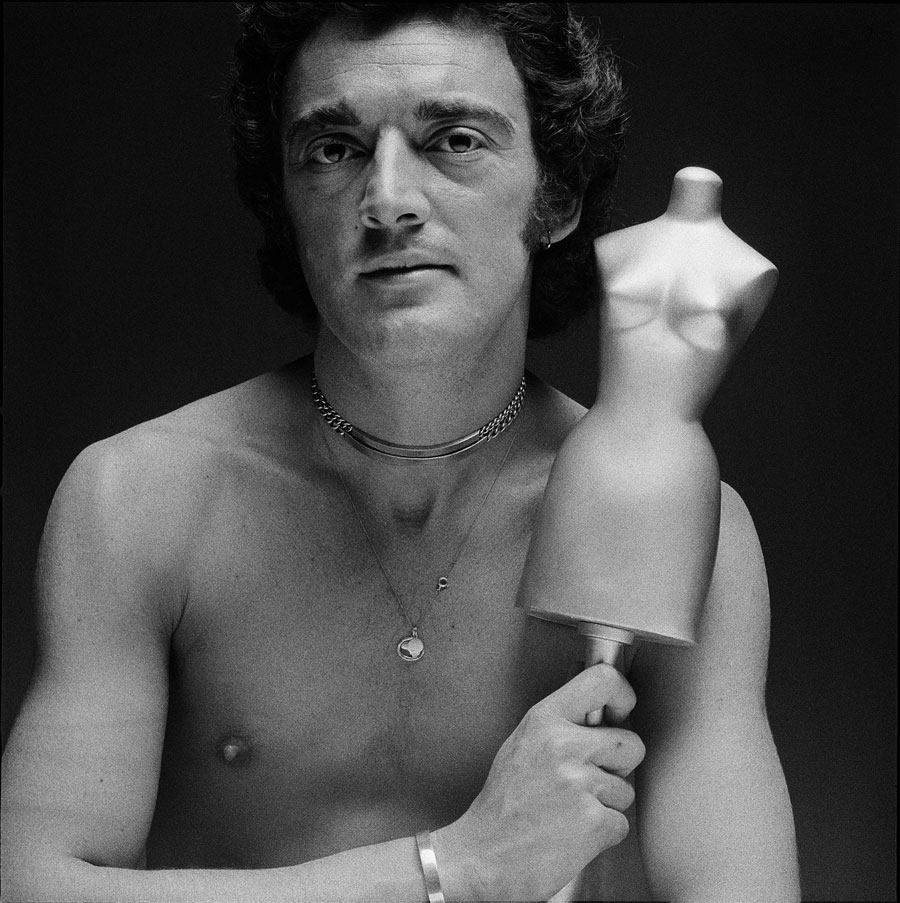
Prato: “Walter Albini - Il talento, lo stilista”
Fondazione Museo del Tessuto will be hosting a major exhibition dedicated to the renowned designer Walter Albini meticulously curated by Daniela Degl’Innocenti and Enrica Morini. Walter Albini. The Designer, the Talent, is the outcome of broad research and study undertaken by the Museum, focusing on the remarkable professional journey of Albini, who emerged as a prominent figure in Italian fashion during the late 1960s and early 1980s. The exhibition project and accompanying catalog are the result of extensive research initiated after the Museum received a significant donation on multiple occasions between 2014 and 2016. This donation consisted of a diverse collection of bijou, sketches, drawings, photographs, documents, and books that belonged to Walter Albini. These items serve as a testament to this exceptional fashion designer’s remarkable creative and planning abilities, spanning from his early years in 1959 to his passing in 1983. This unpublished archival collection provides a comprehensive account of Albini’s professional journey. It showcases his initial work as an illustrator for fashion magazines, his contributions to renowned brands such as Krizia and Baldini, and his involvement with the brands showcased in the prestigious Sala Bianca in Florence. Furthermore, it delves into the establishment of Albini’s brand and explores his enduring impact on the fashion industry. Extensive research was conducted in various repositories and archives, both publicly accessible and privately held, to complement the comprehensive examination of the artifacts housed in the Museum’s collections. Notably, the Communication Study Center and Archive of Parma, as well as the National Chamber Historical Archive of Italian Fashion located at Bocconi University, emerged as prominent sources. This diligent investigative effort has led to a comprehensive reassessment of Albini’s entire professional journey, uncovering a significantly more accurate and often unfamiliar depiction of the designer.
Where: Fondazione Museo del Tessuto
When: From 23 March to 22 September 2024
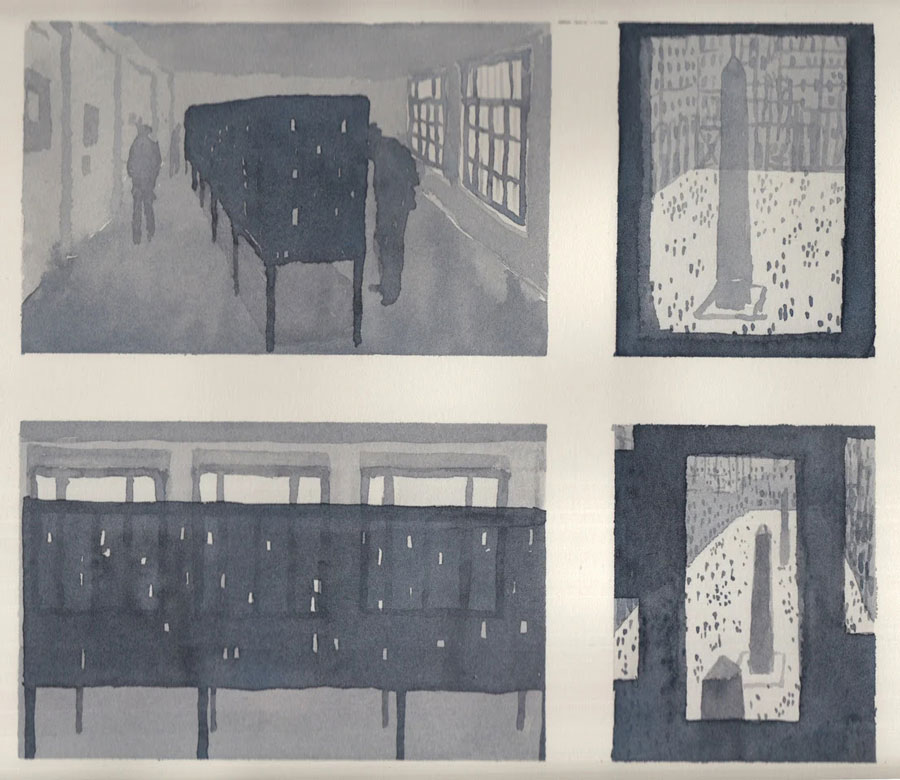
Milano: “Alexander e Sasha Brodsky. Piazza senza nome”
Coinciding with the opening of the headquarters of the newly founded Fondazione Galleria Milano, an exhibition will be presented to the public on Monday 18 March 2024 Alexander and Sasha Brodsky. Piazza senza nome, an exhibition born from the collaboration between Russian architect and artist Alexander Brodsky (Moscow, 1955) and his son, visual artist, printmaker and musician Sasha (Moscow, 1995), active in Brooklyn, New York. Scheduled to run until 8 June 2024, the exhibition will present a large earthen installation, which can only be accessed through windows designed into the walls of the installation itself. At the centre of this deserted square are three obelisks, one in a row: the work, accompanied by drawings and engravings, reflects on the loneliness of the individual in an urban context, only apparently collective. The idea is to restore a matryoshka architecture, which blurs into a dizzying play of perspectives, in which the space of the imagined city is within the space of the installation, which in turn is within that of the foundation. But Brodsky's reflection expands further, including the entire building on Via Romili in relation to the neighbourhood and the city in which it is located and in whose change and expansion, the entire global scene of the 21st century is also included. Finally, the same change affects the identity of the Fondazione Galleria Milano, which between preservation of the past and future experimentation inaugurates its activity.
Where: Fondazione Galleria Milano
When: From 18 March to 8 June 2024
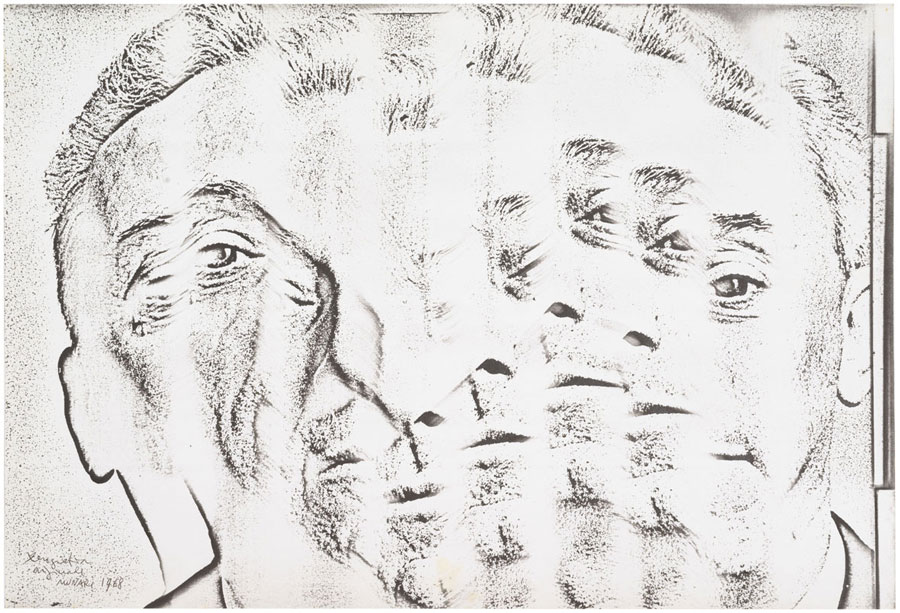
Bruno Munari, Autoritratto, 1968, xerografia su carta. Courtesy kauffmann repetto , Milan New York @ Bruno Munari. Tutti i diritti riservati alla Maurizio Corraini Srl
Parma: “Bruno Munari. Tutto”
The largest Italian exhibition on one of the most iconic figures of 20th century design and visual communication - Bruno Munari - following the memorable exhibitions at the Rotonda della Besana (2007) in Milan and the Ara Pacis (2008) in Rome. The Villa dei Capolavori, home of the Magnani-Rocca Foundation in Mamiano di Traversetolo near Parma, hosts one of the greatest creative geniuses of the 20th century, defined by Pierre Restany as the Leonardo and Peter Pan of Italian design. The exhibition focuses on seventy years of ideas and works - Munari began his activity during the so-called Second Futurism, around 1927 - in all fields of creativity, from art to design, from graphics to pedagogy. Due to the difficulty of clearly defining the linguistic territories he tackled over time, the exhibition will not be divided by typology or chronology, but by attitudes and concepts, in order to show the connections and design relationships between objects that are also apparently very different from each other. Graphics, objects, works of art, EVERYTHING responds to a design method that is becoming more and more precise over the years, with the great courses at American universities and with the most ambitious project, which is that of the workshops to stimulate children's creativity, which since 1977 are still at the forefront of pre-school and early school age education. Munari's work has been the subject of renewed attention in recent years, finally also in the international arena, after the recognition he received during his lifetime, especially in countries such as Japan, the United States, France, Switzerland and Germany, as well as Italy of course.
Where: Fondazione Magnani-Rocca
When: From 16 March to 30 June 2024
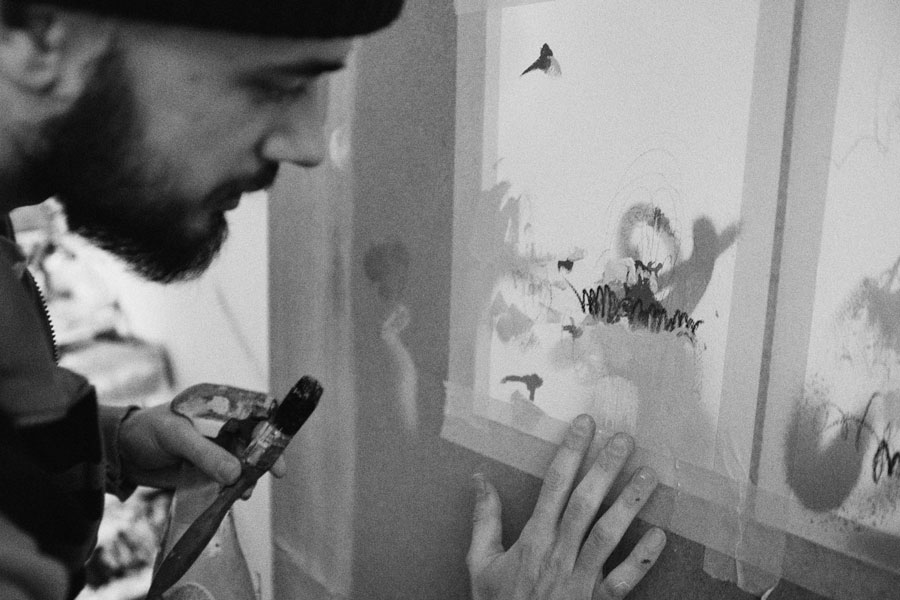
Milano: “Andrea Gallotti - Identità e Differenza”
A solo exhibition by artist Andrea Gallotti curated by Barbara Magliocco, the exhibition organised by Zowe Art with the support of IMAGO Art Gallery offers the public the opportunity to experience the artistic world of Andrea Gallotti and explore the complex interconnections between identity, equality and repetition. His pictorial gesture is based on repetitiveness, nothing is static, everything is in the process of becoming in his works. Inspired by Heidegger's theories, the exhibition explores how identity differs from equality and how repetition can reveal rather than erase differences. The exhibition promises to be a stimulating opportunity to reflect on how we perceive and communicate experiences in contemporary society. Does the repetition of a gesture devalue its importance? How do we perceive repetition? These are some of the questions that motivated Gallotti to create his works. That of the artist is a simple, repetitive gesture, never banal, which changes imperceptibly in his works. In the repetition there are always variables, both calculable and not, that determine the final result of the gesture.
Where: Fabbrica del Vapore (Spazio Alveare Culturale)
When: From 8 to 21 March 2024
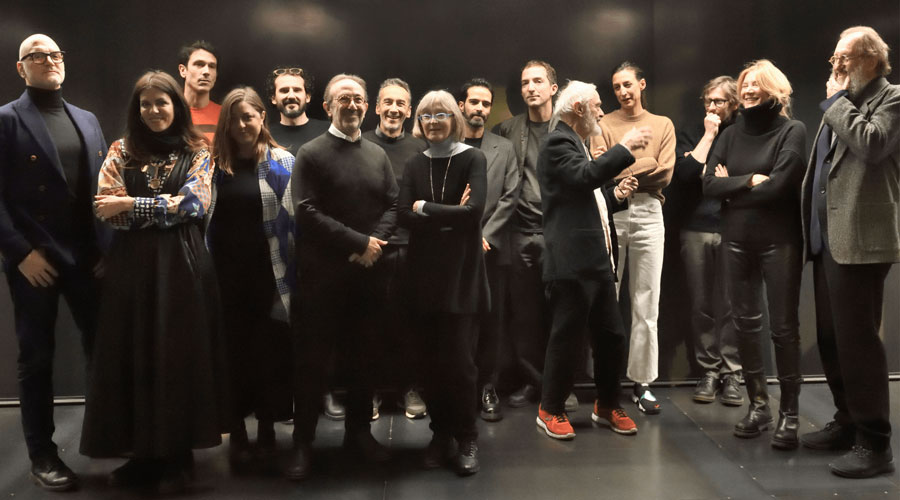
Milano: “The New Poetic Activism. Il design italiano alla ricerca degli oggetti inevitabili”
The exhibition presents the unprecedented objects of a heterogeneous group of contemporary designers, differing in generation and design approach, who find a communion of intent in collecting the fragments of a deliberately syncopated poetic discourse, which has given rise to simple, hermetic, dreamy and disobedient projects, always dissonant. The designers in the exhibition are: Andrea Anastasio, Federica Biasi, Francesco Binfarè, Andrea Branzi, Maddalena Casadei, Lorenzo Damiani, Michele De Lucchi, Francesco Faccin, Formafantasma, Marta Laudani, Giovanni Levanti, Francesco Librizzi, Raffaella Mangiarotti, Francesco Meda, Elena Salmistraro, Valerio Sommella and Paolo Ulian. The exhibition is curated by Mario Trimarchi and produced by ADI Design Museum.
Where: ADI Design Museum
When: Until 7 April 2024
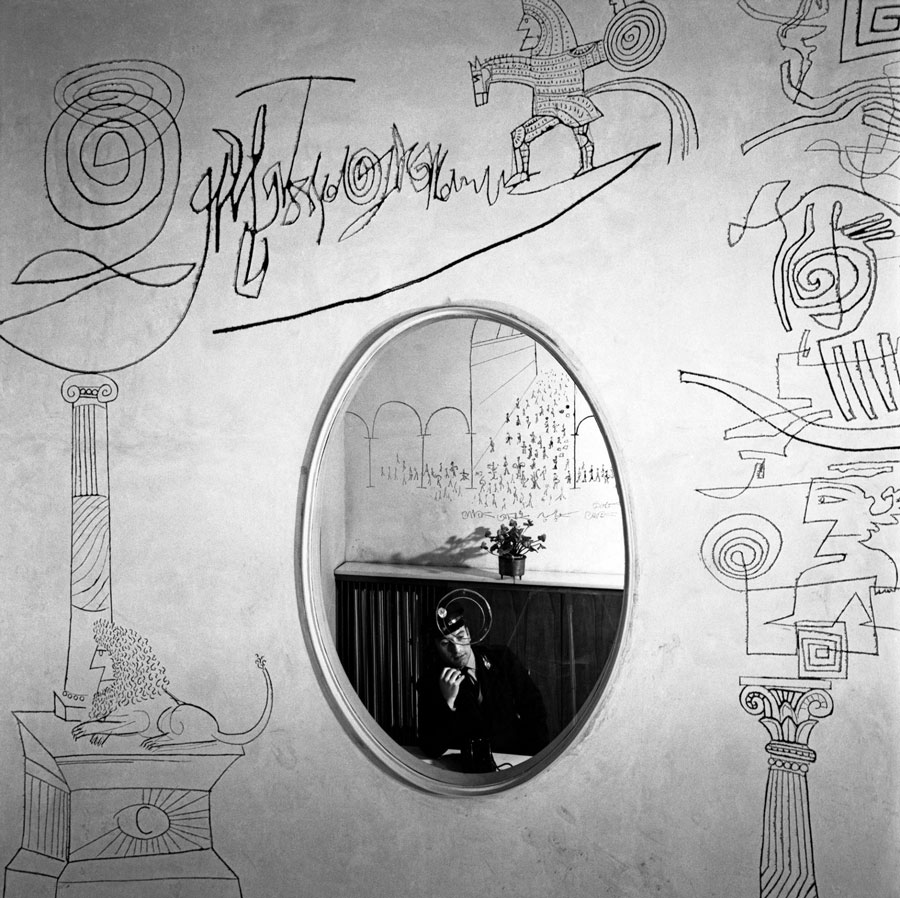
Torino: “Ugo Mulas - I graffiti di Saul Steinberg a Milano”
In 1961, Saul Steinberg created an extraordinary graffiti decoration of the atrium of the Palazzina Mayer in Milan, commissioned by Studio BBPR overseeing the renovation of the building. It was an important work that followed other similar projects the great draftsman and illustrator had undertaken in the United States over the previous decade. When the work was completed, Steinberg asked Ugo Mulas to witness the work in its entirety and in detail. To help the photographer, the artist also wrote a short text explaining the iconography and the meaning of his work. It was a reflection on the labyrinth, starting with the Galleria Vittorio Emanuele in Milan, a city where Steinberg had lived before the war. In 1997, the building was renovated and the graffiti destroyed. All that remains of this splendid intervention are the photographs by Ugo Mulas, which document and interpret the work. The exhibition, Ugo Mulas / Saul Steinberg’s Graffiti in Milan, curated by Archivio Ugo Mulas and Walter Guadagnini, is in CAMERA’s Project Room and recounts this event by reproducing the entire graffiti decoration to scale from Mulas’s photographs, in a precise reconstruction of the Palazzina Meyer space. A selection of some fifteen vintage photographs will allow us to delve into the work of these two great representatives of twentieth-century art, to appreciate Steinberg’s iconographic imagination and Mula’s poetic clarity.
Where: CAMERA - Centro Italiano per la Fotografia
When: Until14 April 2024
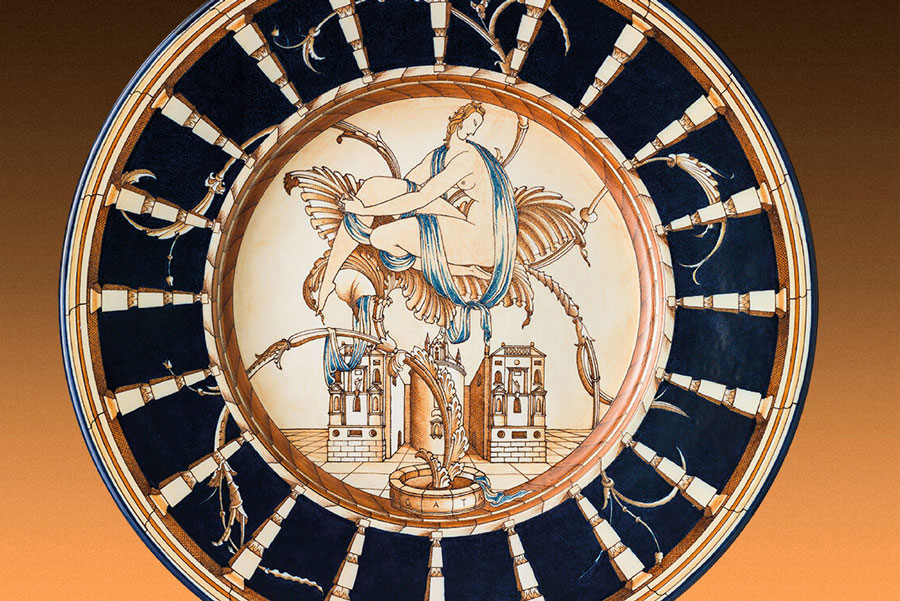
Faenza: “Gio Ponti. Ceramiche 1922-1967 – Oltre duecento opere dell’inventore del Made in Italy”
To the great architect, artist and designer Gio Ponti, promoter and promoter of Italian "making", is dedicated the next exhibition of the MIC Faenza that opens to the public on 17 March. The exhibition, curated by Stefania Cretella, displays in fourteen sections over two hundred works - including ceramics, glassware, furniture and drawings - through which Gio Ponti's work from 1922 to 1978 is analysed in relation to his vision of living and a new modern way of living. "You learn things made with your hands. Nothing that is not first in the hands", this emblematic quotation of Ponti's summarises his thinking, which from the very beginning recuperates the classical tradition (Etruscan and Roman) and the making of high artistic craftsmanship, adapting them to modern taste. Ponti was a key figure in the definition of Italian style not only through his own design work, also thanks to his dense network of relationships with artists, industrialists and craftsmen, but above all thanks to his editorship of two magazines that have become historical in their field such as 'Domus' and 'Stile' and his constant participation in exhibitions and shows.
Where: MIC Faenza
When: From 17 March to 13 October 2024
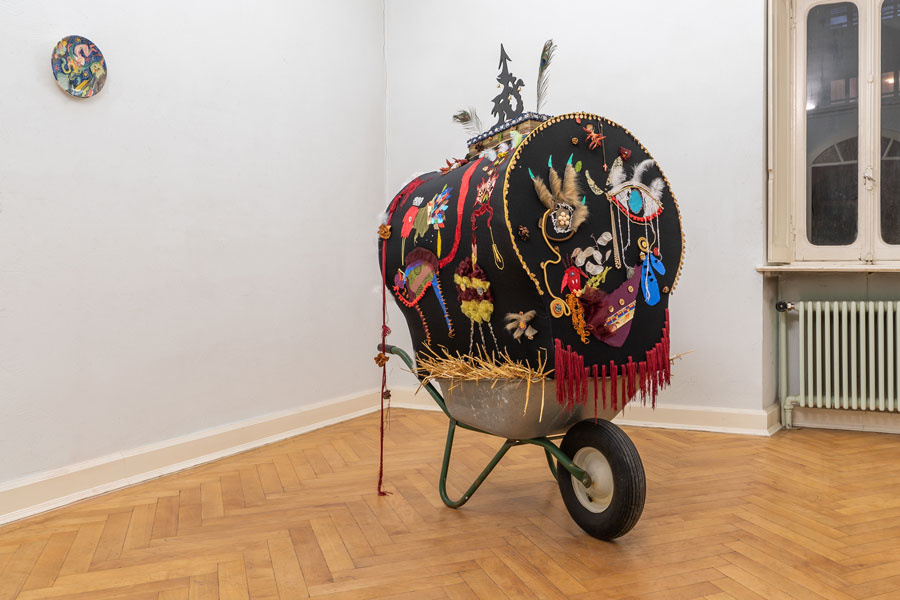
Termoli: “Ersilia. Praticare l’altrove”
MACTE presents a project that is the materialisation of the homonymous podcast produced by MACTE Digital - the museum's online portal - inspired by Ersilia, the imaginary city narrated by Calvino in The Invisible Cities. Is it possible to translate the narrative of Ersilia into a real city? How can these two dimensions coexist and shape each other? The sometimes utopian thrust of Ersilia's stories challenges us to the political value of imagination and its capacity to transform reality. Through the interventions of Aterraterra, Pietro Ballero, Beatrice Celli, Anouk Chambaz, Allison Grimaldi Donahue, Eleonora Luccarini, Alice Pontiggia, Perla Sardella, Teresa Satta and VacuaMoenia, artists who have imagined the places, inhabitants and conditions of Ersilia across multiple disciplines and languages, the exhibition puts into circulation both the artistic practices and the experiences of the public, prompting each participant to become an active part of this encounter between reality and fiction, with the aim of constructing a collective narrative of shared imaginaries. The exhibition is curated by Alice Labor and Ginevra Ludovici.
Where: MACTE – Museo di Arte Contemporanea di Termoli
When: From 15 March to 1 June 2024
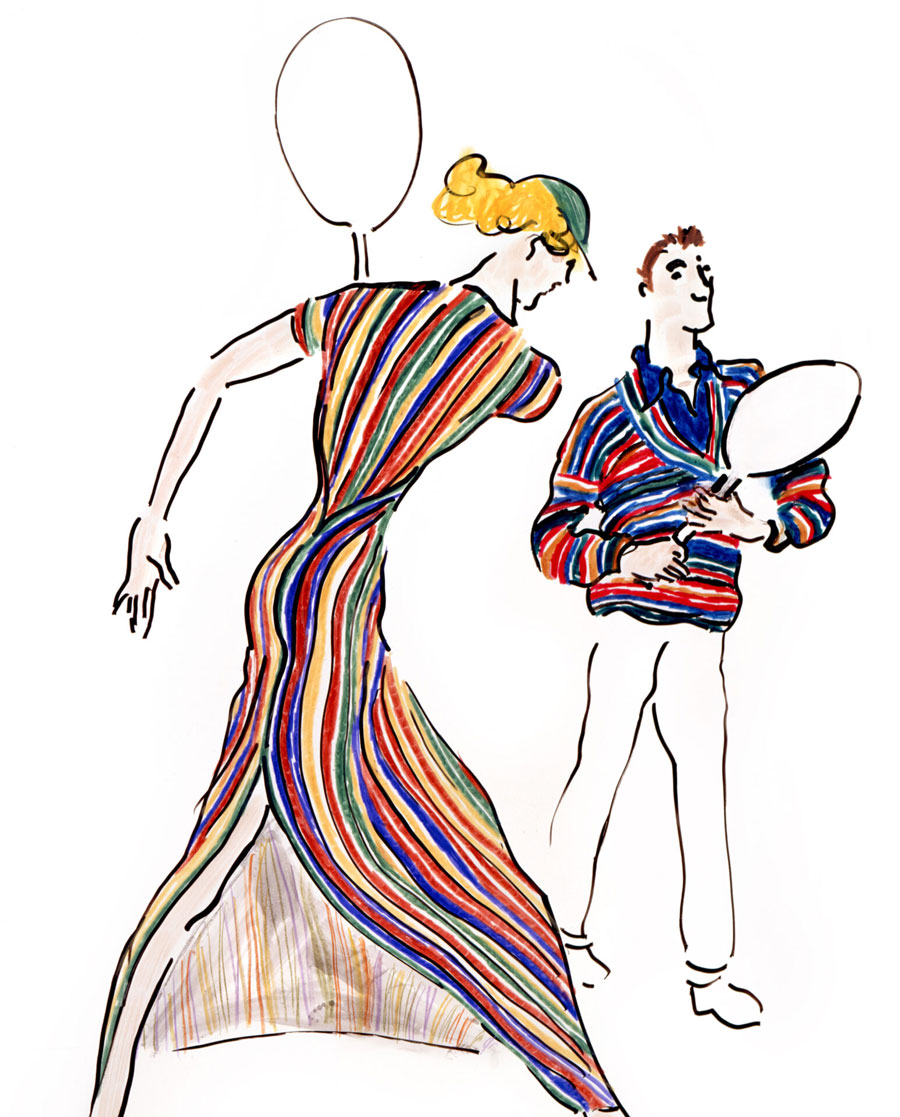
Gallarate: “Fashion Illustration. La Moda Missoni interpretata da Gladys Perint Palmer”
Illustration has always been a strong and captivating communication tool. Gladys Perint Palmer's fashion illustrations for Missoni are a stunning example of how art can elevate and communicate a brand's aesthetic. Rosita Missoni grew up cutting out sketches from fashion magazines she used to find in the family company's atelier and since then she has always been captivated by the expressive potential of fashion illustrations to project herself towards fantastic worlds. So, even when in the 1960s the Missonis began to commission their advertising campaigns to fashion photographers, Rosita was always fascinated by illustration, entrusting her creations to Brunetta until the 1970s, to Antonio Lopez in the 1980s and to Gladys Perint Palmer since the 1990s. Rosita and Gladys met thanks to the fashion journalist Anna Piaggi who in 1989, during the period of Milan fashion shows, had curated the exhibition Gladys Perint Palmer. Characters together with Luca Stoppini. Rosita was enthusiastic and proposed Gladys to illustrate the garments from her collections, to communicate the cheerful and ironic side of the Missoni fashion. A collaboration that went on for ten years and a friendship that still lasts.
Where: Museo MA*GA
When: Until 1 September 2024
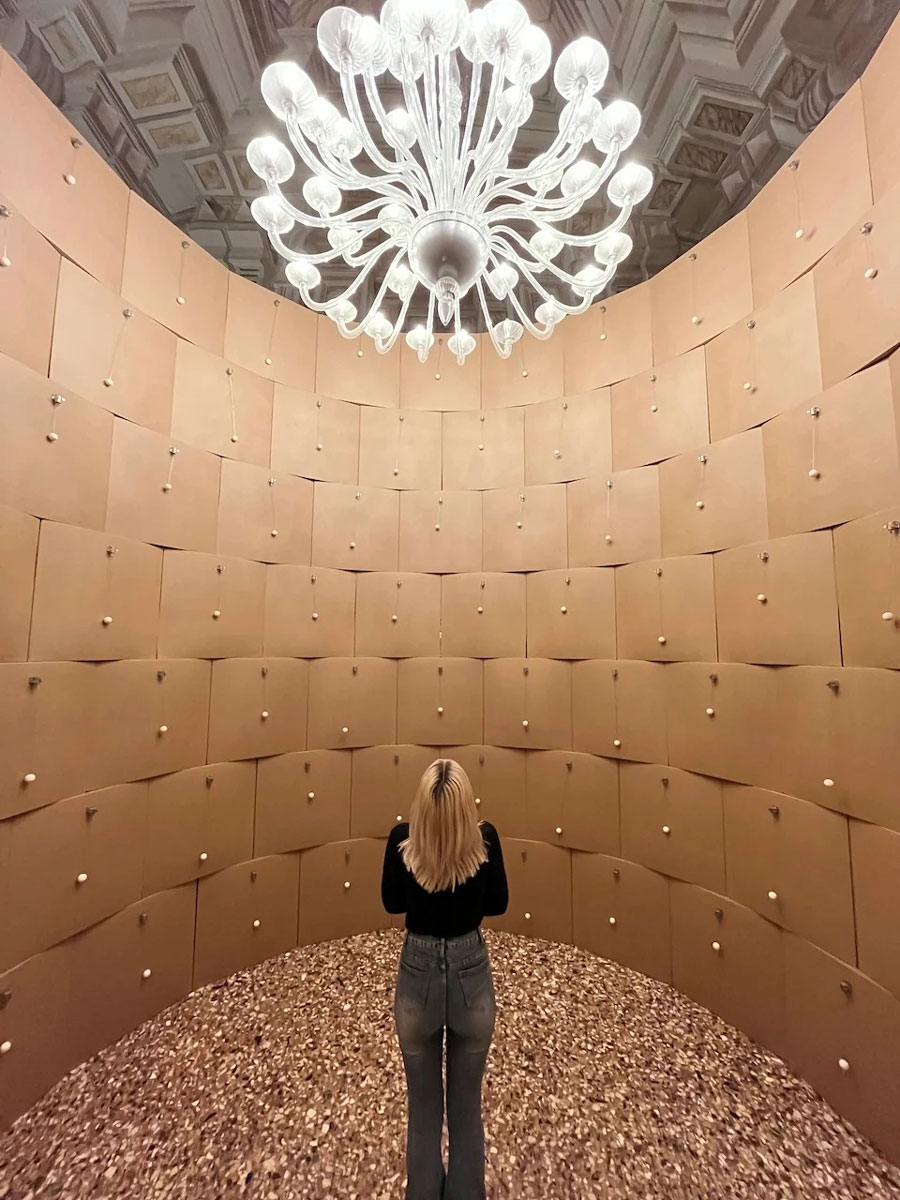
Passariano: “Zimoun”
Villa Manin celebrates the Swiss artist Zimoun (Bern, 1977), author of visual and sound installations with hypnotic charm. Made of simple materials such as cardboard boxes, plastic bags, metal or wooden rods, the artist’s installations appear as living organisms that enchant us as much for the dynamics of their movements as for the sounds they produce. The route consists of nine large works that occupy as many rooms in the villa and are both kinetic creations and complex sound instruments. Each of the installations is composed of modular elements driven by electric motors that produce recurring sounds or rhythms. The works created in this way are poised between natural creation and ingenious invention, between study and chance, between geometry and abstraction. They appear as fascinating natural creatures, so much so that the observer is led to search for the logical principle that governs their functioning, as if he were confronted with a new phenomenon of nature. Villa Manin is not merely a frame for the works. The creations housed in the rooms dialogue with the architecture, the stuccoes and frescoes on the walls, as well as with the sounds of the park. The decorations of the Passariano mansion are characterised by recurring geometric shapes that find a reference in the repetitive elements of the installations, while the sinuous profiles of the stuccoes and the colours of the frescoes enhance the modular character and restrained tones of the works by contrast. The beats, hums, pulsations and ticks produced by the installations mingle with the sounds of nature from the park: the chirping of birds, the chirping of cicadas, the rustling of the wind, the drumming of the rain. Zimoun’s work is therefore an opportunity to rediscover the spaces of the villa, a new way to visit it and to get closer to the nature that surrounds it.
Where: Villa Manin
When: Until 17 March 2024
Tag: Mostre Milan News Fuorisalone tips
© Fuorisalone.it — All rights reserved. — Published on 04 March 2024





